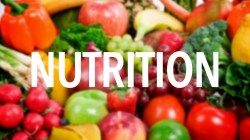On a calorie-by-calorie basis, whole grains are lousy sources of fiber, minerals, and B vitamins when compared to the lean meats, seafood, and fresh fruit and veggies that dominate clean eating. For example, a 1,000-calorie serving of fresh fruits and vegetables has between two and seven times as much fiber as does a comparable serving of whole grains. A 1,000-calorie serving of whole grain cereal contains 15 times less calcium, three times less magnesium, 12 times less potassium, six times less iron, and two times less copper than a comparable serving of fresh vegetables.
Moreover, whole grains contain a substance called phytate that almost entirely prevents the absorption of any calcium, iron, or zinc that is found in whole grains, whereas the type of iron, zinc, and copper found in lean meats and seafood is in a form that is highly absorbed. Compared to fruits and veggies, cereal grains are B-vitamin lightweights. An average 1,000 calorie serving of mixed vegetables contains 19 times more folate, five times more vitamin B6, six times more vitamin B2 and two times more vitamin B1 than a comparable serving of eight mixed whole grains. On a calorie-by-calorie basis, the niacin content of lean meat and seafood is four times greater than that found in whole grains.

